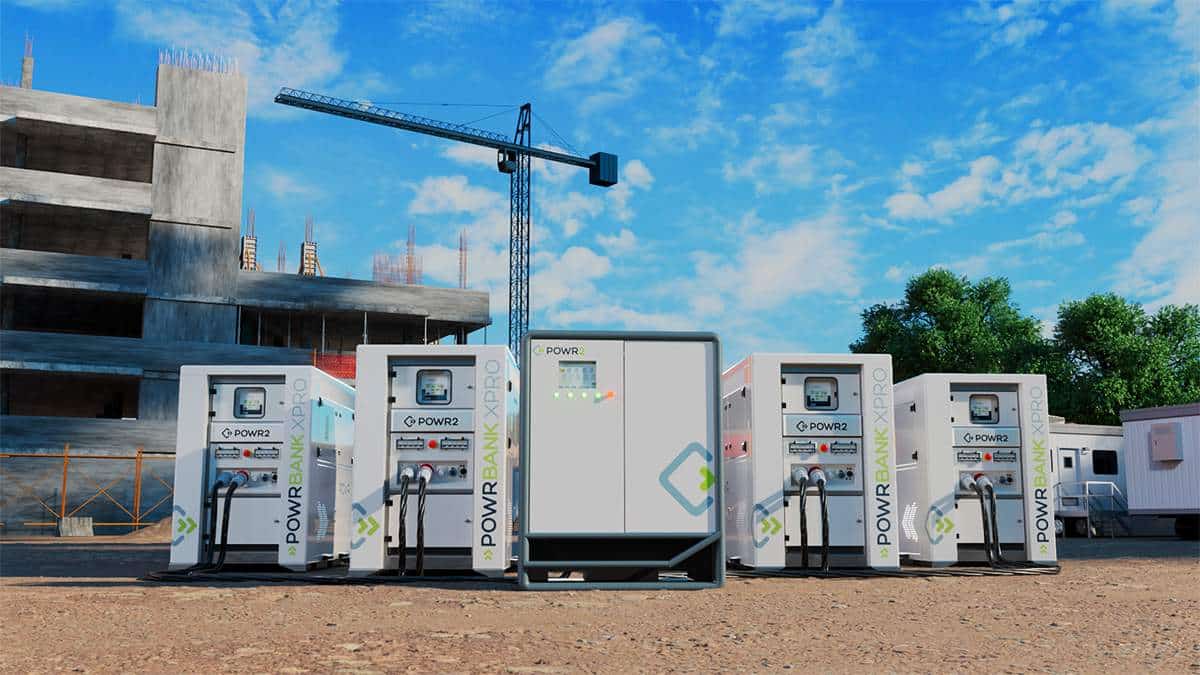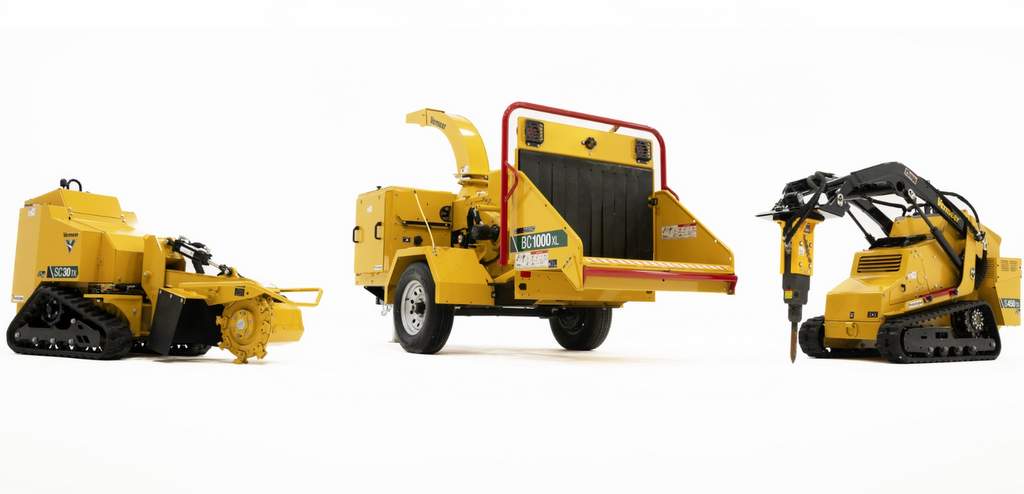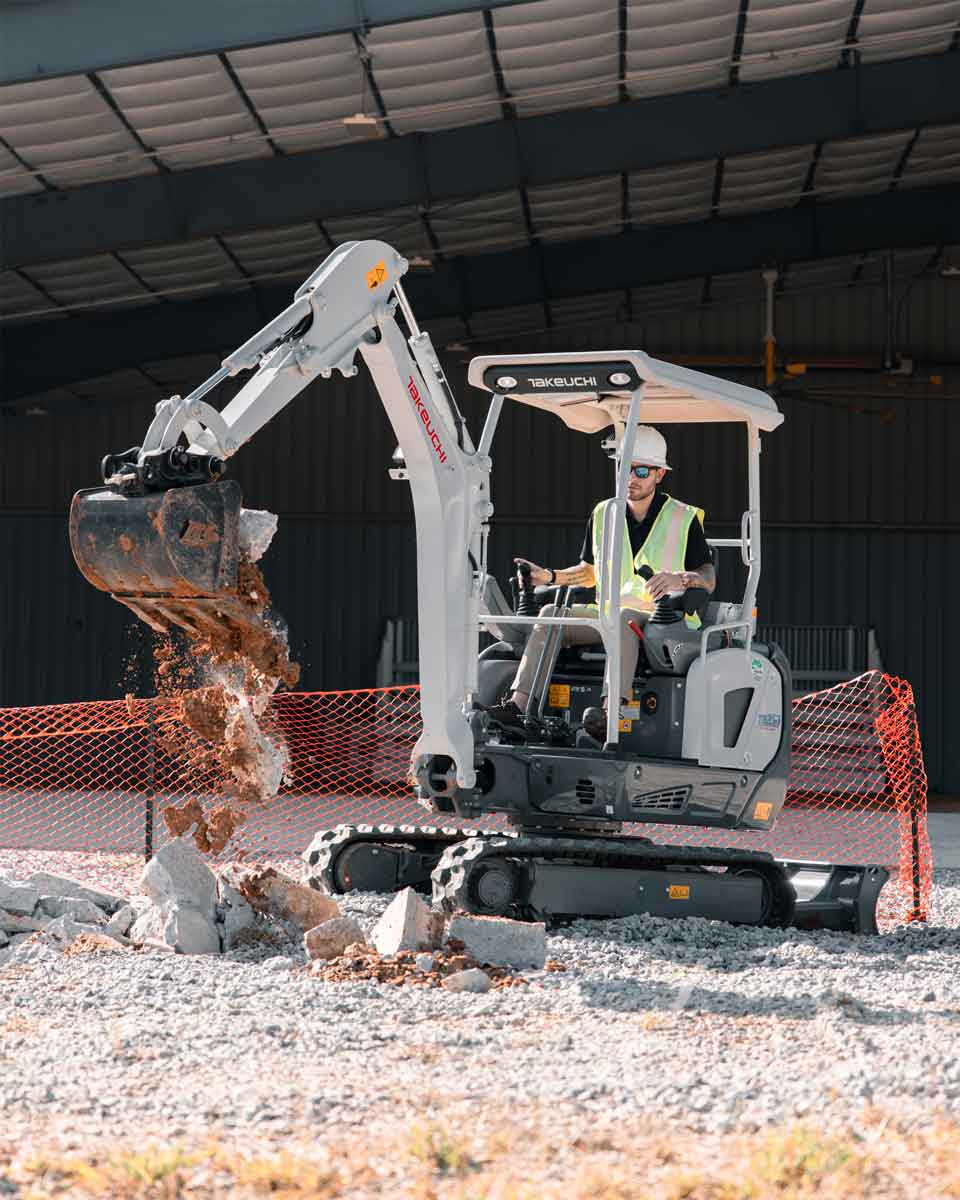Electric Equipment: What’s New in the Battery-Powered Machine Market
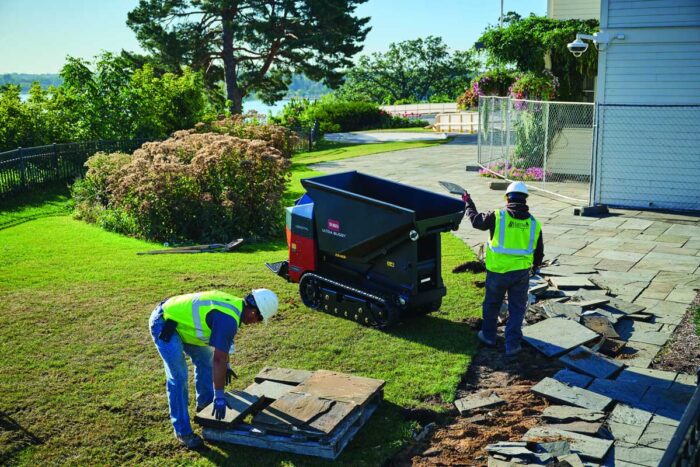
With more and more manufacturers releasing electric equipment, it’s important to pause and look at the many benefits of these machines. We’re talking quiet, emissions-free operation, the ability to meet sustainability goals or explore new work, no idling and less maintenance. And that’s just skimming the advantages (you can always check out compactequip.com for more). But first, take a look at some of the most recently released battery-powered equipment below.
Toro
Toro first entered the electric equipment market in 2020 with the release of its eDingo 500. Today, the company continues to build on its battery-powered offerings with machines that serve in multiple industries — from construction and landscaping to demolition and golf courses. Most recently, Toro introduced three new electric machines at World of Concrete 2025. This significant addition to Toro’s electric lineup includes the eDingo TX 750 compact utility loader, Ultra Buggy e2500-TS and Ultra Buggy e2500-THL.
“The three new models in Toro’s portfolio of battery-powered compact equipment offer contractors greater flexibility when tackling specialized jobsites, such as densely populated urban areas with noise restrictions or indoor environments,” says Sam Dando, senior product marketing manager at Toro. “These machines empower contractors to work more efficiently and boost overall productivity.”
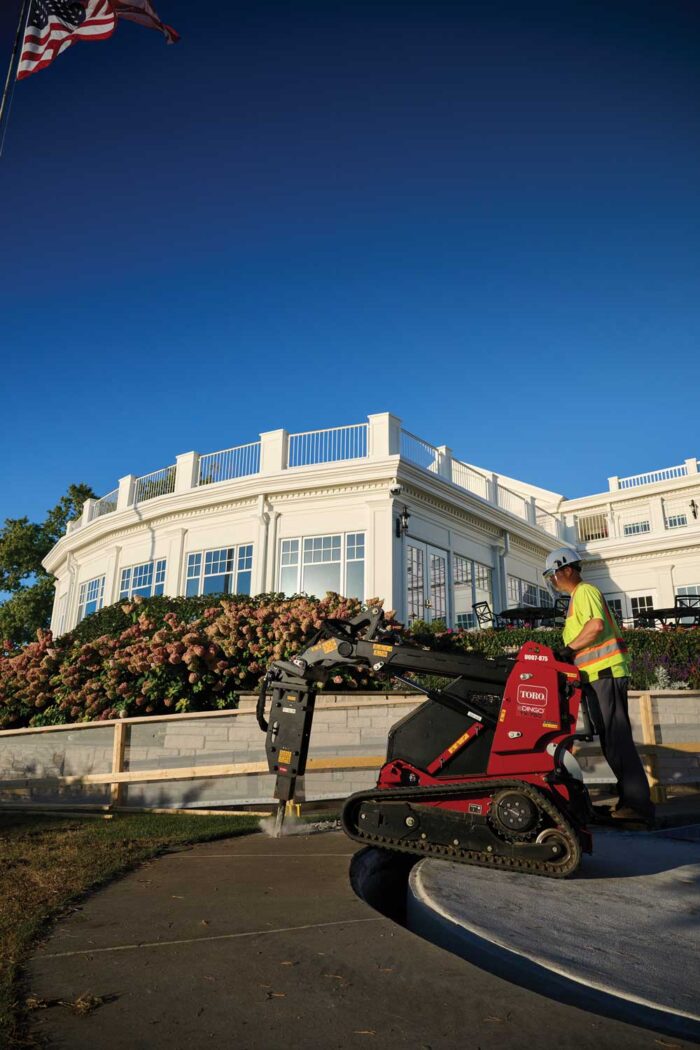
The new eDingo TX 750 is powered by Toro’s proprietary HyperCell Battery System and delivers up to eight hours of runtime. This compact, emissions-free machine provides a great solution for interior construction professionals, such as demolition and concrete contractors. Toro designed the eDingo TX 750 with narrow tracks so operators can navigate tight spaces with ease. Dando says the unit measures 31.5 in. wide, which means the eDingo TX 750 can fit through 3-ft doorways as well as in hallways, small rooms and through gates. The machine also features easy-to-learn T-handle controls so operators can master the eDingo TX 750 in minutes.
Toro’s Ultra Buggy e2500-TS combines the company’s swivel Ultra Buggy with innovative battery technology — allowing operators to simplify material placement, save time and reduce manual effort. For example, the Ultra Buggy e2500-TS replaces four to five wheelbarrow loads or two to three loader trips, significantly reducing trips and heavy lifting.
“With 14-cu-ft carrying capacity, 2,500-lb load rating and up to eight-hour runtime, the Ultra Buggy e2500-TS is engineered to handle a wide variety of materials on demanding jobsites — indoors or outdoors,” says Dando. “The Ultra Buggy e2500-TS was designed to address the challenges faced by general construction and concrete contractors, municipalities, landscapers and interior construction and demolition teams, making material movement faster, easier and more efficient.”
Like the eDingo TX 750, the Ultra Buggy e2500-TS is built for compact spaces at 31.5 in. wide and boasts the same intuitive T-handle controls. Dando adds that a reinforced track system enables the buggy to traverse rough terrain or debris on jobsites with ease while minimizing turf disturbance.
Need to lift higher? Toro’s electric high-lift Ultra Buggy e2500-THL can effortlessly dump into a 30-yd dumpster, navigate tight spaces with precision and operate continuously for up to eight hours on a single charge. The Ultra Buggy e2500-THL gives operators a carrying capacity of 1,250 lbs at full 76-in. dump height and 12.8-cu-ft volume. Dando says it’s ready to take on the most debris-intensive tasks, whether hauling concrete rubble, building materials or trash. Like the other two new models, the Ultra Buggy e2500-THL is designed with Toro’s HyperCell Battery System.
JLG
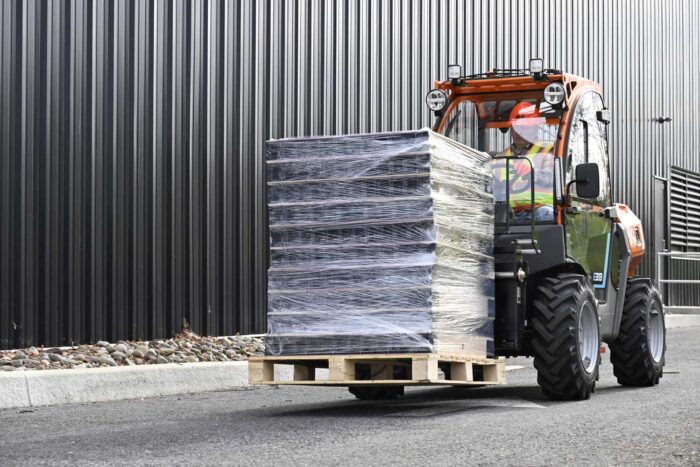
JLG Industries is no stranger to exploring electric options for its mobile elevating work platforms. In fact, the company has a rich history of manufacturing battery-powered equipment.
“JLG has been offering electric vehicles for more than two decades,” says Rogerio dos Santos, JLG’s vice president of strategy and product management. “In fact, JLG’s first hybrid model was introduced more than 25 years ago. In recent years, demand for both hybrid and electric machines has grown steadily as the industry seeks ways to respond to existing and future legislation on emissions and noise, while also reducing the total cost of equipment ownership. JLG offers electric and hybrid models in all of its core access equipment categories: scissor lifts, vertical lifts, low-level access lifts and boom lifts.”
One of the company’s most current offerings is the E313 electric telehandler. This machine, released in October 2024, stands out in the 3,500-lb capacity range and is the first electric model in JLG’s telehandler lineup. The company designed the E313 for a variety of applications, including landscaping and hardscaping, roofing, concrete and masonry, general construction, building maintenance and more. It offers quiet, zero-emissions operation so crews can work in sensitive environments and indoor spaces.
“With a maximum lift height of 13 ft and a forward reach of 5 ft, 8 in., it’s an ideal tool for pick-and-place tasks such as transporting materials around jobsites, accessing dump trucks, single-story houses and reaching into truck beds or over obstacles,” says John Boehme, JLG’s senior product manager of telehandlers. “This versatile machine has Load Stability Indicator, Seatbelt Engagement and Operator Presence systems to ensure operator confidence and protection during tasks.”
Other notable features of the E313 include an electric motor that offers more responsive performance compared to traditional internal combustion engines, as well as a two-speed electric transmission that provides optimal performance and power management. Boehme adds the E313’s rear pivot steering results in less ground disturbance and is a feature particularly appreciated by landscapers.
The E313 is powered by six maintenance-free, 48-volt, lithium-ion batteries and offers operators up to four hours of continuous operation. Boehme says the telehandler’s intelligent battery monitoring system informs operators about the state of charge and initiates a reduced performance mode when necessary. Convenient charging options are available for both 110- and 220-volt power sources.
Case Construction Equipment
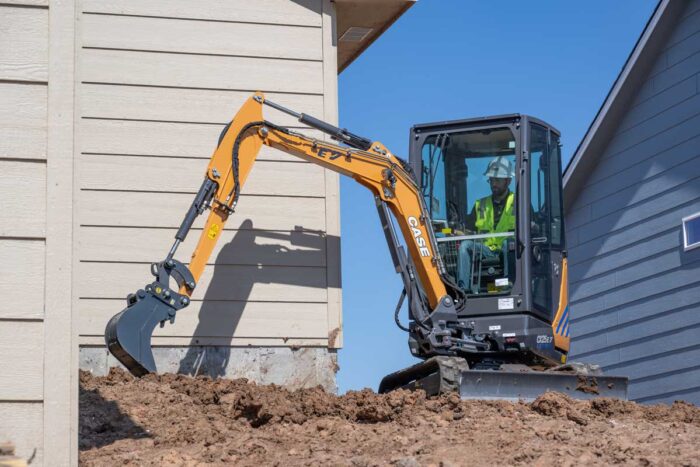
Case CE’s current portfolio includes five electric machines: an electric backhoe, two mini excavators, a compact wheel loader and small articulated loader. Brady Lewis, product manager, emerging products and technology at Case Construction Equipment, says each model is designed to deliver power and performance with zero emissions and significantly less noise. The company’s most recent electric announcement was the CX25EV mini excavator, which was unveiled in June 2025.
This new excavator is a compact, short-radius machine that’s ideal for tight jobsites where maneuverability matters. The CX25EV features electrohydraulic controls and zero emissions, which gives operators a quiet, diesel-like performance. Lewis mentions the machine comes ready for all kinds of work, thanks to adjustable hydraulic flow and up to three auxiliary circuits for quick couplers and attachments.
“The CX25EV was a natural next step for Case as we build out our electric equipment offering,” he says. “It gives crews a more powerful, compact excavator option that still fits into tight spaces and performs like a diesel machine but without the noise or emissions. It sits one step above our smaller CX15EV electric mini excavator, helping us offer the right electric machine for a wider range of jobsites and customer needs.”
It’s also important to mention Case’s 580EV electric backhoe — the industry’s first fully electric backhoe — which was released in 2024. The backhoe is powered by a 71-kWh battery and can last up to eight hours. With the 580EV, operators can expect the same muscle as Case’s 97-hp 580SN diesel model but with a quieter, zero-emissions experience. Lewis says the electric machine features upgrades like a touchscreen, smooth electrohydraulic controls and efficient heating and cooling to keep operators comfortable on the job.
“This machine was our way of bringing electric power to one of the most versatile machines on the jobsite, the backhoe,” he says. “Case took our popular 580SN diesel model and reimagined it as a purpose-built EV — but no retrofits — just a clean-slate design. The result is a machine that matches its diesel counterpart in digging and loading power but runs quieter and emits nothing, making it perfect for urban and sensitive environments.”
Volvo Construction Equipment
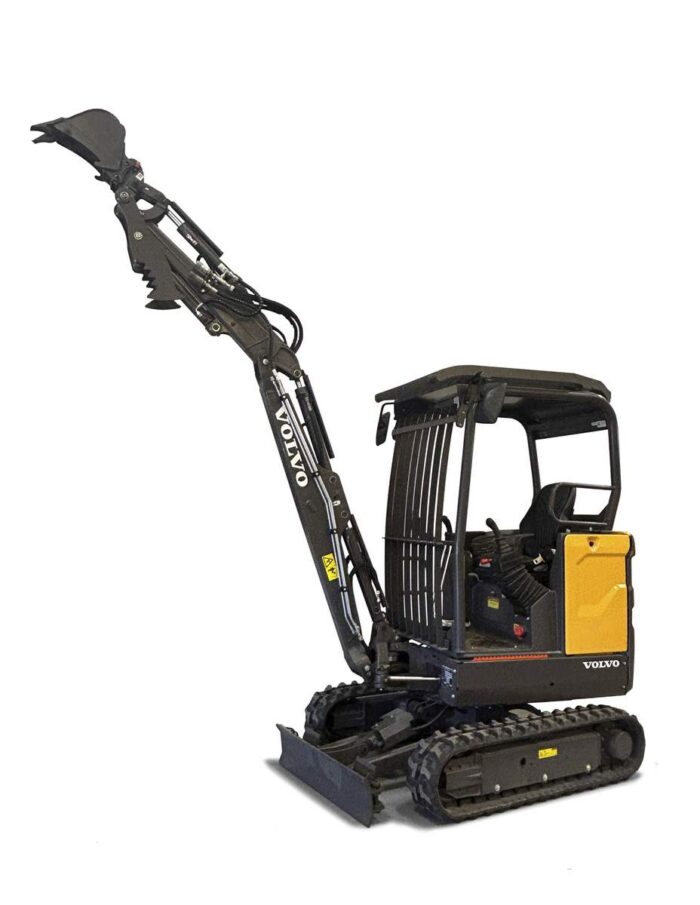
With electric machines being more common in Europe, Volvo has been ahead of the game in electrifying its equipment. The company first unveiled its ECR25 Electric compact excavator at bauma 2019 in Munich and has kept rolling out emissions-free equipment since. Volvo’s electric lineup has now grown to include three compact excavators, two compact wheel loaders, one small compactor, a mid-size excavator and a mid-size wheel loader.
One of those mini excavators — the Volvo EC18 Electric — is a 1.8-ton machine that excels in indoor demolition thanks to its lack of emissions and reduced noise. In February, Volvo released a straight boom version of the EC18 Electric that offers a 10 percent higher pin height.
“As demolition contractors know, a straight boom offers longer reach than a standard two-piece boom design and typically makes it easier to position the machine,” says Dr. Ray Gallant, vice president, sustainability and productivity services, Volvo Construction Equipment North America. “Contractors told us that a straight boom on the EC18 Electric would give them the extra height needed to reach ceilings while still easily fitting through doorways. Nimble machines are critical for indoor demolition, and we welcomed the opportunity to provide a solution that will help our customers win more jobs.”
Gallant further explains that the straight boom on the EC18 Electric offers a 13-ft working height with a bucket. The battery-powered machine can be equipped with a range of attachments weighing up to 450 lbs — further enhancing the EC18 Electric’s versatility. Operators can work up to six hours on a full charge depending on how the machine is used. The EC18 Electric has nearly identical specs as its diesel equivalent without the idling or fuel costs.
Hitachi Global Air Power
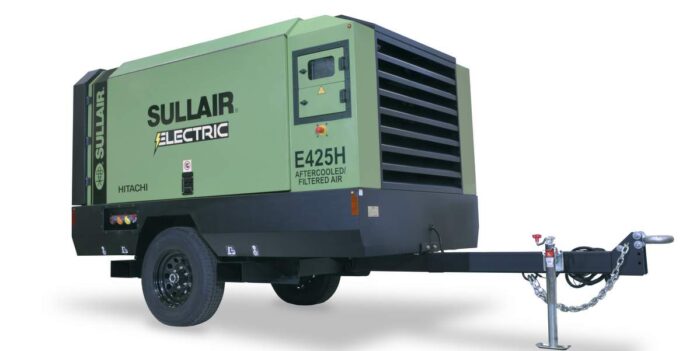
In January 2025, Hitachi Global Air Power unveiled its latest offering in the electric portable air compressor market: the Sullair E425H. This new unit delivers 425 cfm at 150 psi and was designed to operate in harsh weather and dirty environments that are typical in rental applications. Jerel Cole, senior product manager at Hitachi Global Air Power, says the E425H acts as the “little brother” to the E1035H that was released at CONEXPO 2023.
“Our goal is to expand our offerings and give customers a diesel alternative solution,” he says. “We don’t see diesels going away — they have a lot of benefits — but these electric solutions stand out for their zero emissions, less noise and consistent power, especially when working in urban environments.”
With the introduction of the E425H, Cole says the company took customer feedback into consideration. Mobility, noise and safety were all important factors.
“The new design had to be mobile and easy to move around places like jobsites, amusement parks and more,” he says. “It also had to be quiet and have less impact on the environment, as well as the operators who were working with the machine. Finally, operator safety was critically important. We wanted to move all the hazards like electrical connections and compressed air connections away from the operator. So, we strategically placed those items around the package for that particular reason.”
One of the coolest features of the E425H is its patent-pending condensate management system. Cole explains that the system eliminates the need for external condensate disposal, reducing environmental waste. “Typically, when condensate is produced, it’s collected,” he says. “Then it has to be transported offsite, so that’s additional expenses for customers. Now, with this new technology, we can get rid of that.”
Another highlight of the E425H is its swing out coolers. The patent-pending swing out coolers allow for the coolers to come outside the machine, so operators or technicians can clean them easier and faster. Cole says this feature was designed particularly for construction and rental environments where there’s a lot of dirt, dust and grime.
Skyjack
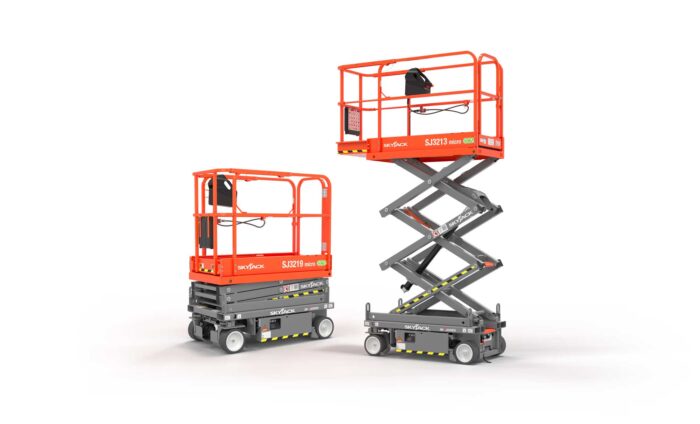
Skyjack’s new micro scissor line — which includes the SJ3213 and SJ3219 — was built on the previous success of the company’s SJ3013/14 micro units built with E-Drive to improve controllability and provide consistent power, torque and traction. The line combines low cost of ownership with the company’s renowned product support. The micro scissor lifts are perfect for rental fleets and contractors tackling tight spaces, making them an essential addition to modern jobsites.
“Fully proportional drive and lift controls offer superior drive with more efficiency, controllability and improved torque, while variable speed brushless AC electric front wheel drive provides exceptional duty cycles,” says Malcolm Early, VP of marketing for Skyjack. “With over 25 percent gradeability climbing loading ramps is easy, and excellent all-round jobsite performance and maneuverability is achieved.”
These new micro scissor lifts offer crews the ability to work in environments where space is at a premium while still providing a substantial work area with a 20-in. rollout extension. The SJ3213 and SJ3219 have been designed to fit most passenger style elevators, as well as through standard doors. They are available in 13- and 19-ft heights with a 500-lb capacity.
Pam Kleineke is managing editor of Compact Equipment.

